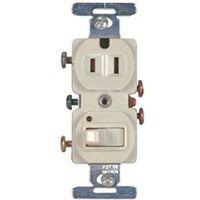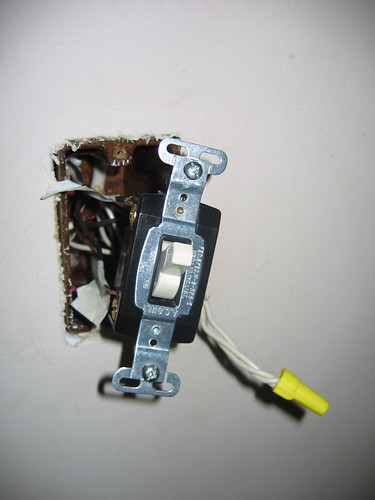
Most of the receptacles in your home are the duplex type and have been in common use for the better part of the century. Current versions differ from those used through the 1950s because the newer ones have a grounding hole. Polarized receptacles came into use in the 1920s. The different-size slots (the longer one always goes with the neutral wire, the shorter with the hot) maintain consistent, directed current flow along the respective hot and neutral wires. The earliest receptacles were an odd arrangement. The plug-in part of the outlet was actually a screw-in affair, something like a light bulb. The receptacle plate had a small flap that flipped up to reveal a socket into which the plug-in was screwed. (Hey, electrification had to start somewhere.)
The following are specialized types of duplex receptacles:
- Floor receptacles
- Clock receptacles
- GFCIs
Floor receptacles are specially designed to withstand foot traffic. They are installed in the middle of large rooms or in other areas far away from a wall receptacle. They often are seen in offices and other commercial settings with large, undivided floor spaces.
A clock receptacle is recessed so that a clock and its cord can be hung flush against a wall. You used to see these more often in kitchens, but you don’t see them as often now, especially since the advent of inexpensive battery-powered wall clocks. This type of receptacle is now more common for plugging in microwaves and for picture lights that plug in behind pictures and paintings.
A GFCI can be used for a single location such as a bathroom or a kitchen, or it can offer protection to an entire circuit of receptacles or other loads. This is possible only if the GFCI is the first receptacle on a circuit. From that point on, anything beyond it on the same circuit will have GFCI protection. If it’s in the middle of a circuit or in any other position than the first receptacle, it will not offer any protection to any load between it and the service panel.









